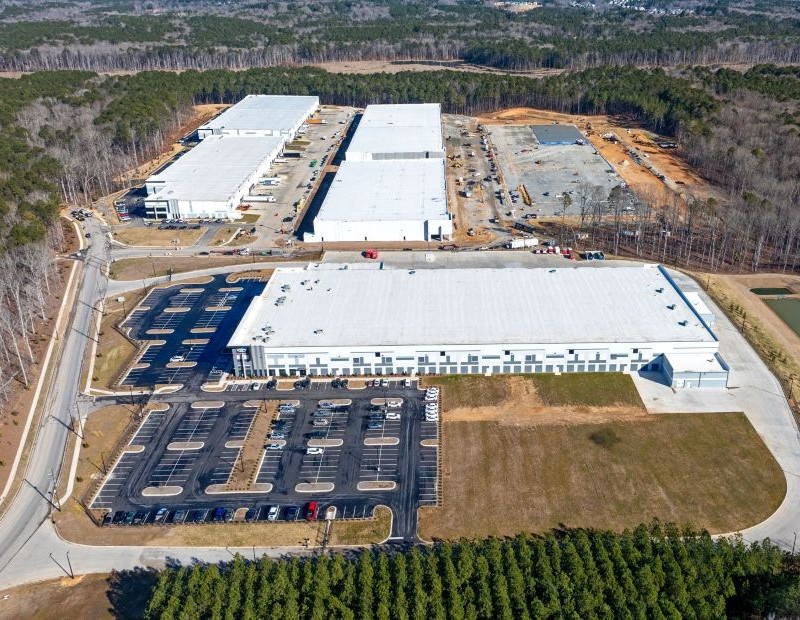Speeding the Transition to Renewable Power
The rapid shift to renewable energy sources is driven by growing demand from corporate and industrial users and rapidly declining costs.

Image via Pixabay
Businesses remain committed to climate and clean energy efforts and are expected to continue the transition to renewable energy resources, despite short-term impacts from the COVID-19 crisis and current recession—a trend that has accelerated over the past decade, according to several reports.
In its Mid-Year 2020 Renewable Energy Industry Outlook, Deloitte identified slowdowns in utility-scale wind and solar energy capacity installations earlier in the year due to coronavirus-related supply chain disruptions, shelter-in-place orders and labor constraints. Those issues led the U.S. Energy Information Administration (EIA) to lower its annual wind and solar installation forecasts down to 32 GW, cutting the wind forecast by 5 percent to 19.4 GW and solar forecast by 10 percent to 12.6 GW. As those issues eased, EIA increased the combined forecast to 35.8 GW in June, the pushed it to 37 GW by July.
“The utility scale wind and solar is really bouncing back,” said Marlene Motyka, Deloitte’s global and U.S. renewable energy leader.
READ ALSO: Cogeneration Picks Up Steam in CRE
In its July Short Term Energy Outlook, EIA stated overall electricity generation from renewable energy sources should rise from 17 percent in 2019 to 20 percent in 2020 and 22 percent in 2021. According to the organization, the increase is fueled by expected additions to wind and solar generating capacity.
Nuclear generation is expected to average about 21 percent this year and be slightly less than 21 percent by 2021. Coal use should fall from 24 percent in 2019 to 18 percent this year and then increase to 21 percent in 2021. Natural gas will be the largest source with generation, increasing from 37 percent in 2019 to 41 percent this year before declining next year to about 36 percent in response to expected higher natural gas prices in 2021.
Natural gas will continue to play a role in electricity generation for at least the next few years, Motyka noted. “It’s an important transition fuel as we continue to move to more renewables and they try to figure out longer-term storage solutions,” she said.
The demand for more renewable energy is increasing as the prices for wind, solar and batteries for energy storage have been rapidly declining. According to Motyka, the cost for wind generation has decreased by 70 percent over the past decade; the cost for solar generation has declined by 90 percent, while the cost for lithium-ion batteries—still the most common battery used for energy storage—went down by 87 percent.
Sanem Sergici, principal at The Brattle Group, also pointed to the progress that has been made in storage, particularly in cost reduction. The cost of storage saw a marked decline from $1,300 per kWh in 2010 to $300 per kWh in 2020. In California, more than 40 percent of the new connections are solar plus storage.
C&I Drives Growth
The Renewable Energy Policy Pathways Report prepared by The Brattle Group for the REBA Institute, an affiliate of the Renewable Energy Buyers Alliance, notes that C&I demand for renewable electricity has been an important driver of that growth with nearly 25 GW of renewable energy contracted by C&I over the last decade. The REBA Deal Tracker, which reports publicly announced corporate procurements, green tariffs and other transactions, shows that as of late April, 1.76 GW of renewable energy, representing 16 deals, had been announced. Last year’s number was a record 9.33 GW, in 79 deals, up from 6.39 GW in 75 deals in 2018. REBA notes there has been an increase in both number of deals and total deal volume each year since 2016.
 Deloitte has identified three trends are contributing to that expectation: climate change concern by consumers and stakeholder pressure on businesses, convergence of lower costs and desire for clean energy and an appetite for resiliency. Deloitte’s 2020 study found that 51 percent of business respondents surveyed said they’re working to procure more electricity from renewables. Nearly 60 percent of businesses reported increased pressure to disclose climate risks and 90 percent have reviewed or changed their disclosure procedures and developed plans to address the risks.
Deloitte has identified three trends are contributing to that expectation: climate change concern by consumers and stakeholder pressure on businesses, convergence of lower costs and desire for clean energy and an appetite for resiliency. Deloitte’s 2020 study found that 51 percent of business respondents surveyed said they’re working to procure more electricity from renewables. Nearly 60 percent of businesses reported increased pressure to disclose climate risks and 90 percent have reviewed or changed their disclosure procedures and developed plans to address the risks.
READ ALSO: Solar Installations Power Through the Pandemic
In addition, nearly half the Fortune 500 companies have adopted sustainability and renewable energy goals and more than 200 have committed to 100 percent renewable energy supplies, The Brattle Group’s report notes—a sign that corporations are increasingly committed to clean energy.
Motyka said utilities in particular “are seeing the writing on the wall” as customers, both residential and C&I, are pushing them to provide more renewable energy.
Identifying Pathways
Utilities are also part of the focus in The Brattle Group report for REBA Institute that identifies and evaluates the potential pathways to increase access and decrease costs of procurement for C&I customers.
Sergici said the report looked at three policy pathways that could increase renewable access during the next decade: advancing state renewable portfolio standards (RPS); expanding utilities renewable energy purchasing programs for C&I customers; and introducing supply choice for the C&I sector. Expanding the competitive supply options appears to be the fastest and most cost-effective path to increase customer renewable energy access, possibly up to 100 percent, while reducing costs up to 11 percent. The other pathways can also provide “attractive near and long-term options” to improve access.
READ ALSO: Seattle Pilot Seeks Solution to Split Incentives
Sergici said the report, which analyzes eight sample states—Arizona, California, Colorado, Georgia, Massachusetts, Minnesota, North Carolina and Virginia—laid out effective procurement options that should empower both large and small C&I customers. The states were chosen to represent the diversity of current regulatory structures. For example, Massachusetts—which is located in a centrally organized wholesale market (ISO-New England) —has aggressive RPS targets and offers full retail choice. Meanwhile, Georgia, which is not in a centrally organized wholesale market, has no statewide RPS and limited supply choice.
“Ease of procurement is the most important” aspect, Sergici said, citing transparent contract terms, easy sign-up procedures, low up-front administrative fees and reasonable contract lengths as aspects that improve access to all businesses. For example, some developers require 20-year PPA contract commitments, making the cost too prohibitive for smaller companies.
Utilities should also step up their game and offer their contracts in a more accessible way for these customers, Sergici noted. Those with energy subscription programs should provide attractive near-term opportunities to improve access to renewables, supporting new renewable access when retiring fossil fuel generation.







You must be logged in to post a comment.